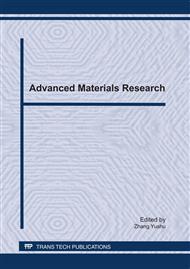p.39
p.43
p.48
p.53
p.58
p.63
p.68
p.73
p.78
Optimization of High Performance Engineering Plastics in Thin Wall Part Injection Molding
Abstract:
The purpose of this study is to improve the qualities of thin wall part injection molding using polypropylene. The shape of injection molding products is getting more and more complex now, and the requirement for accuracy is also getting higher. The traditional trial and error method and rules of experience cannot be used well at all. This study applied Taguchi method and grey relational analysis to optimize the injection molding process for obtaining multiple quality characteristics of thin wall parts. The experimental results verify the reliability of optimum conditions via confirmation experiment.
Info:
Periodical:
Pages:
58-62
Citation:
Online since:
February 2011
Authors:
Price:
Сopyright:
© 2011 Trans Tech Publications Ltd. All Rights Reserved
Share:
Citation:


